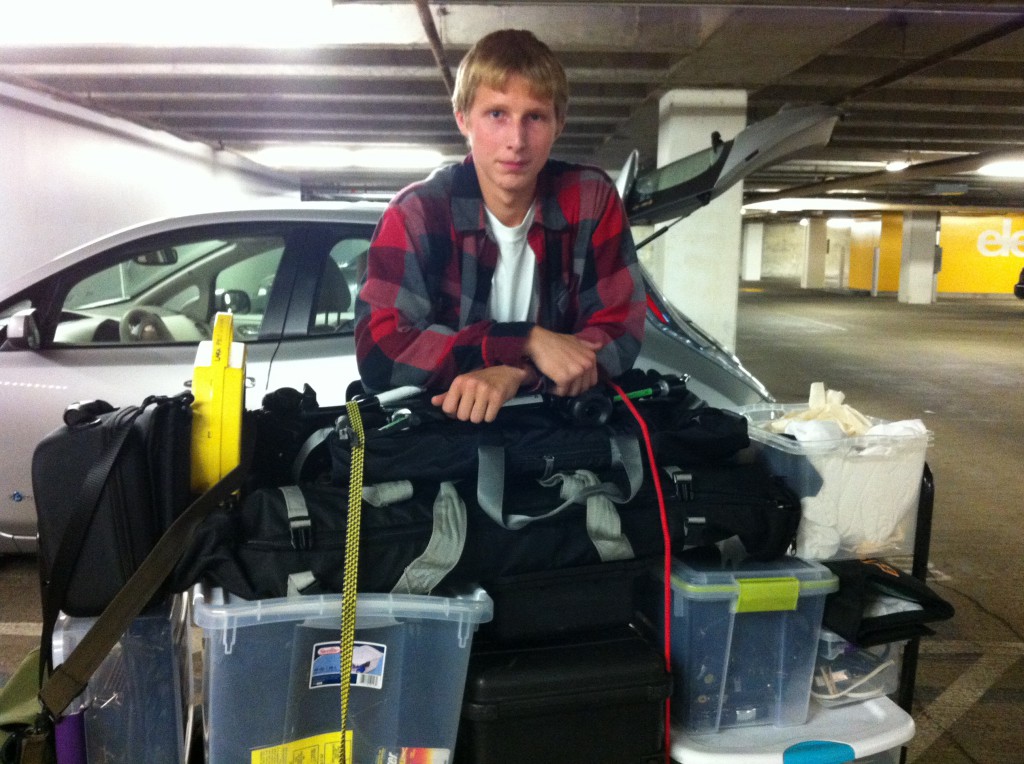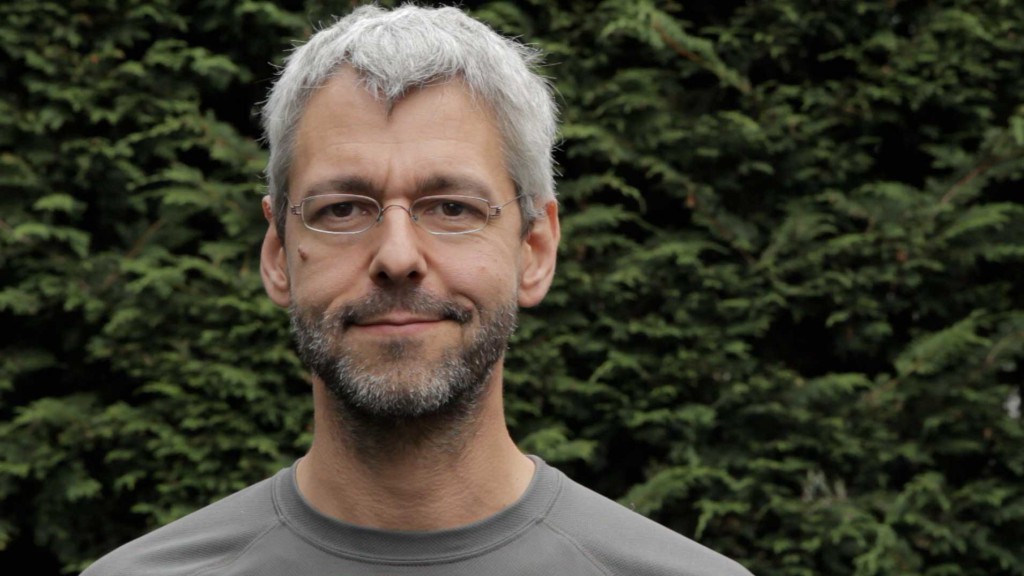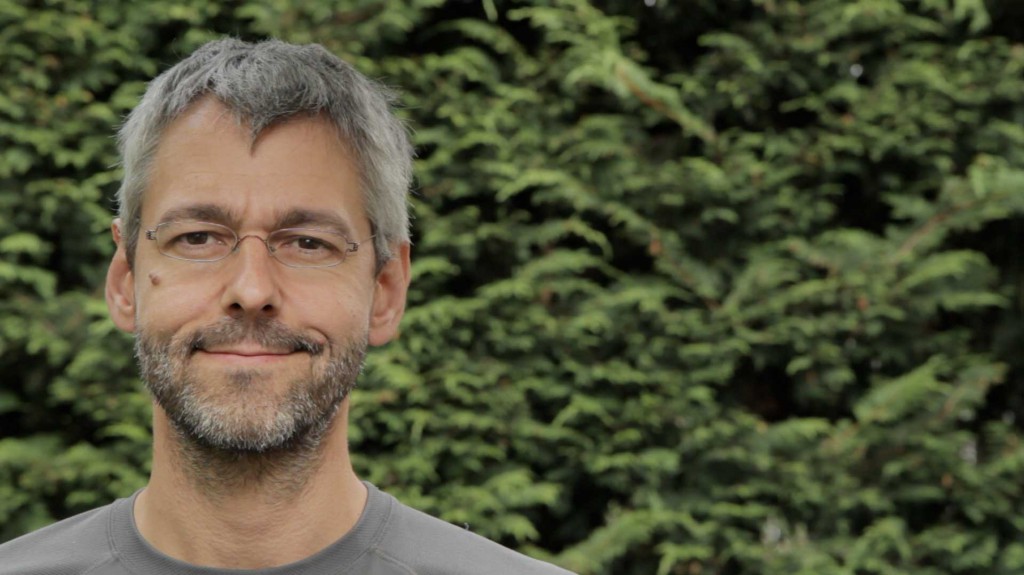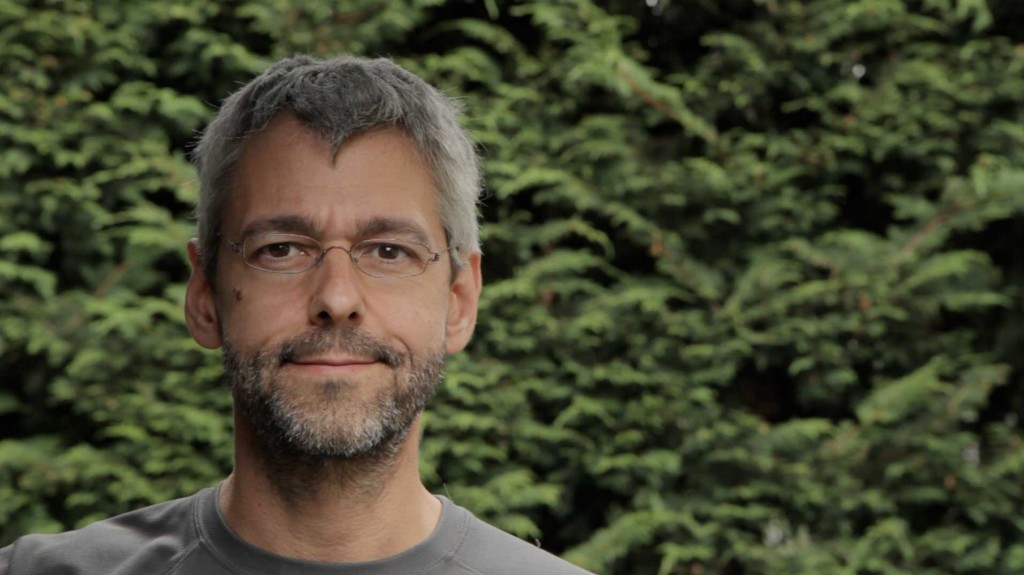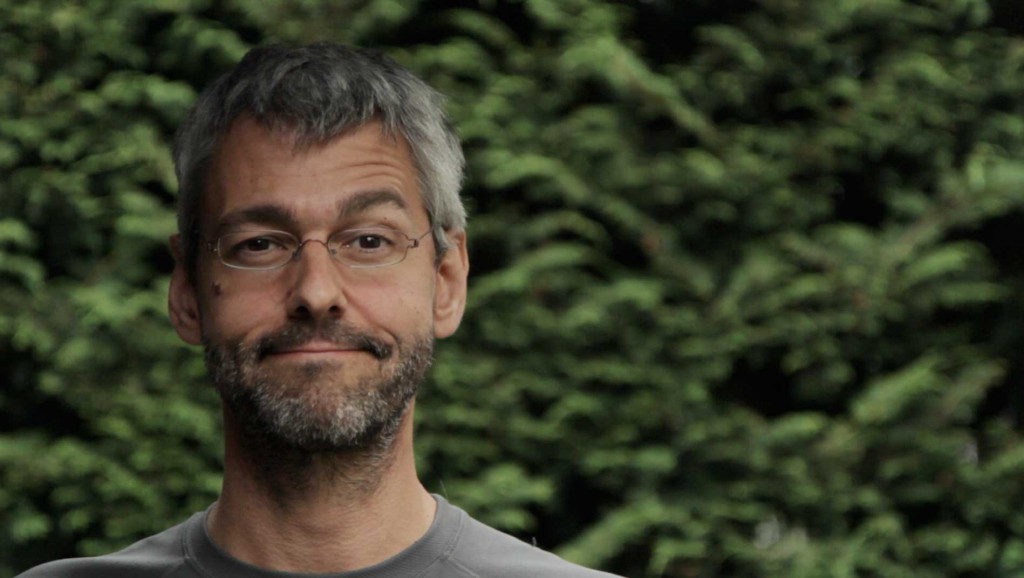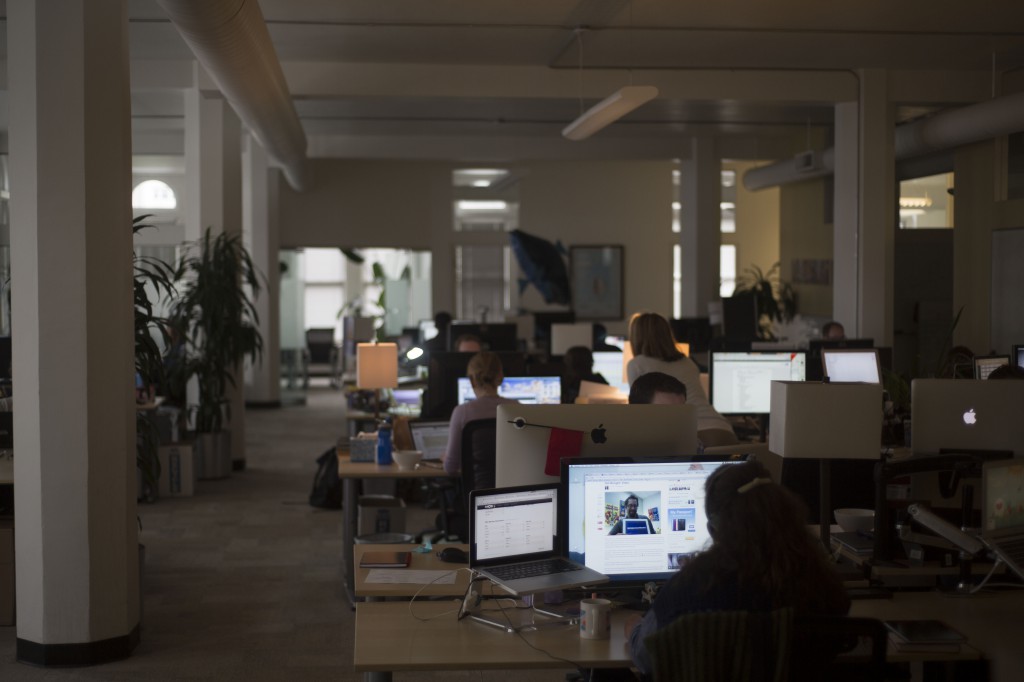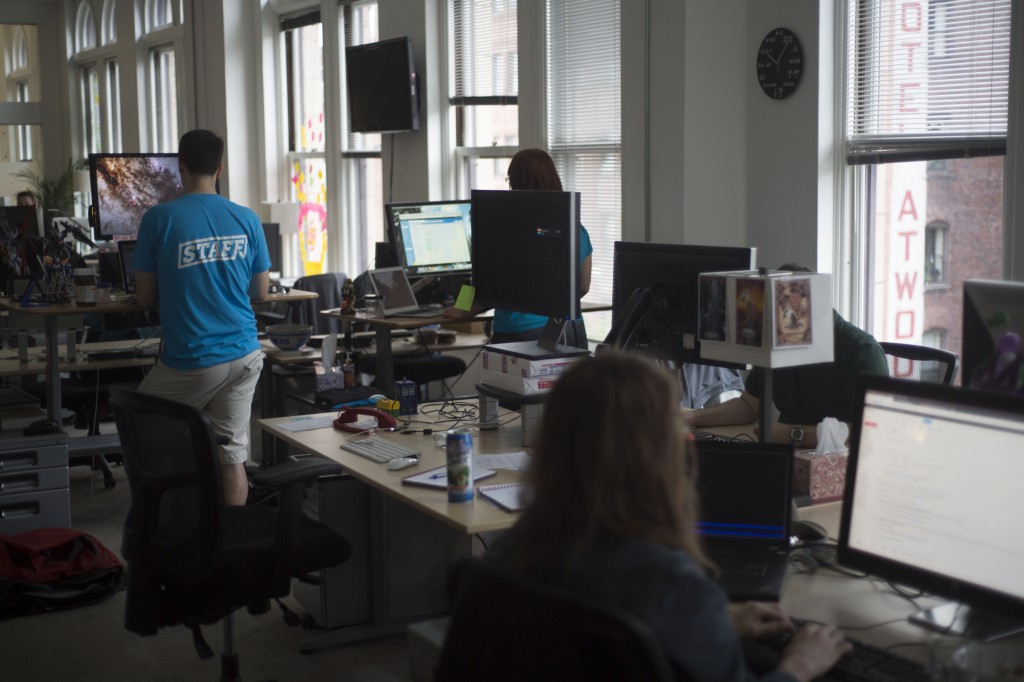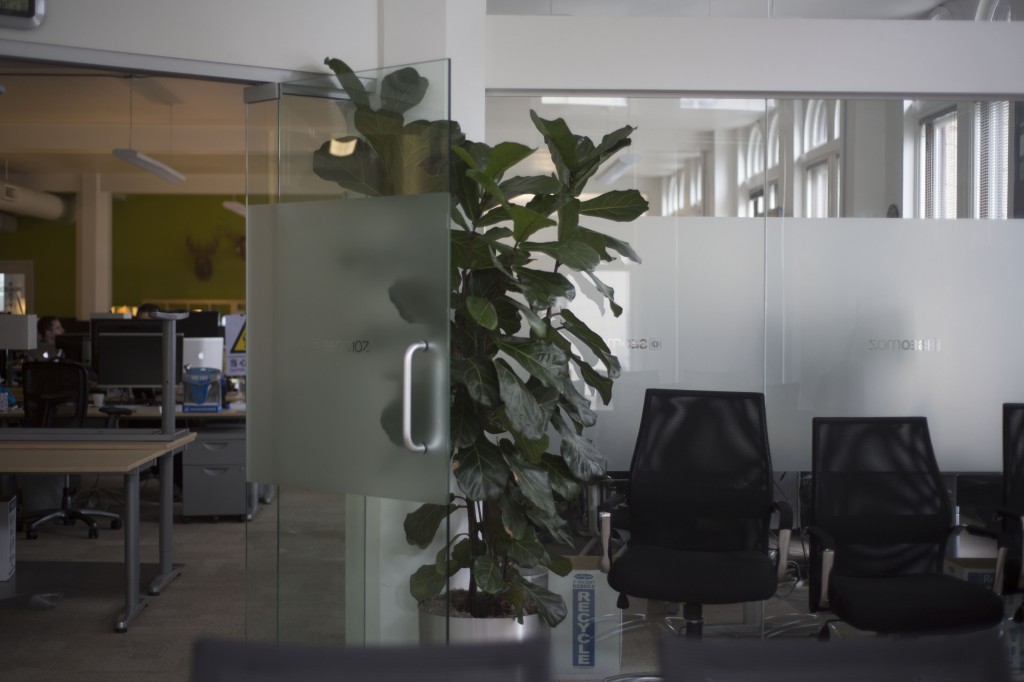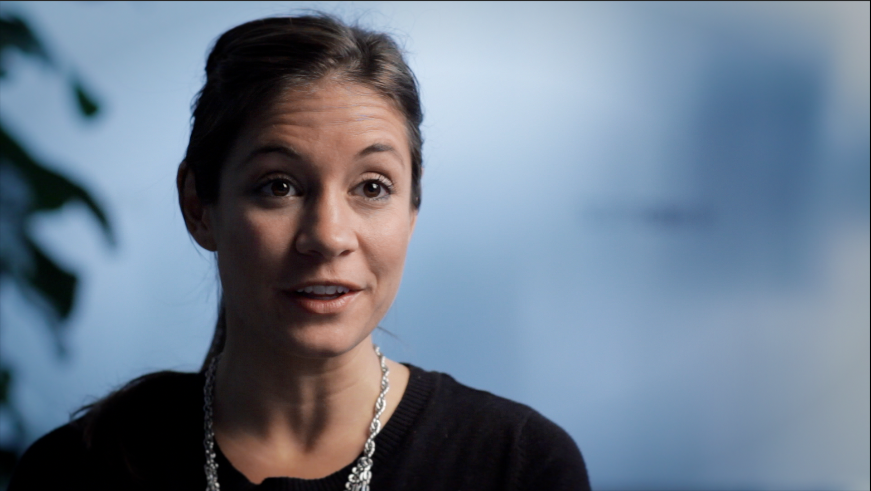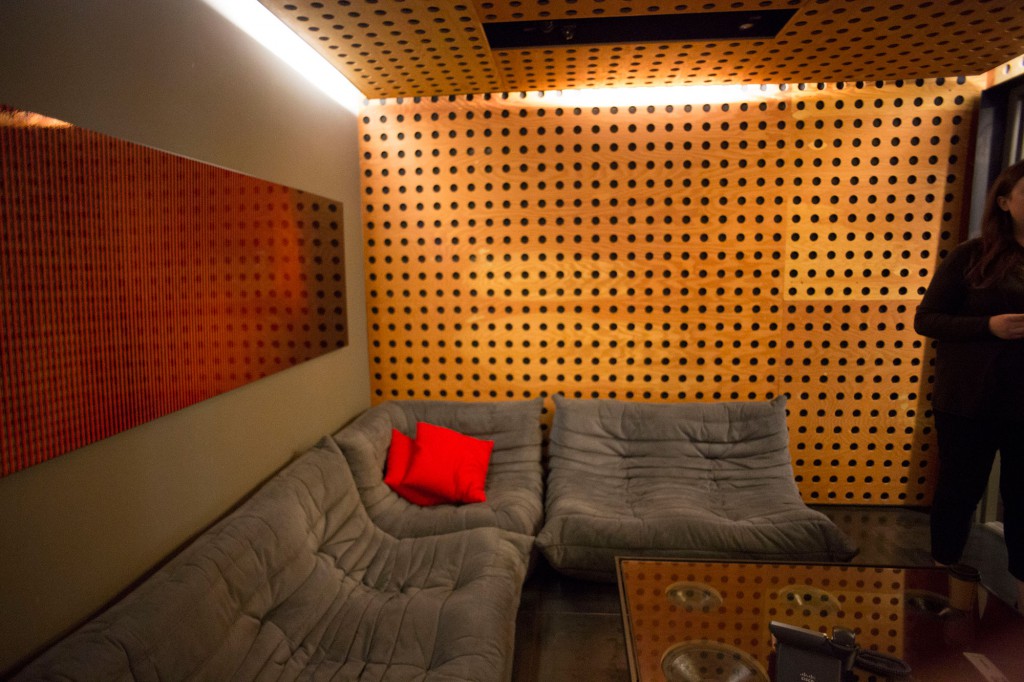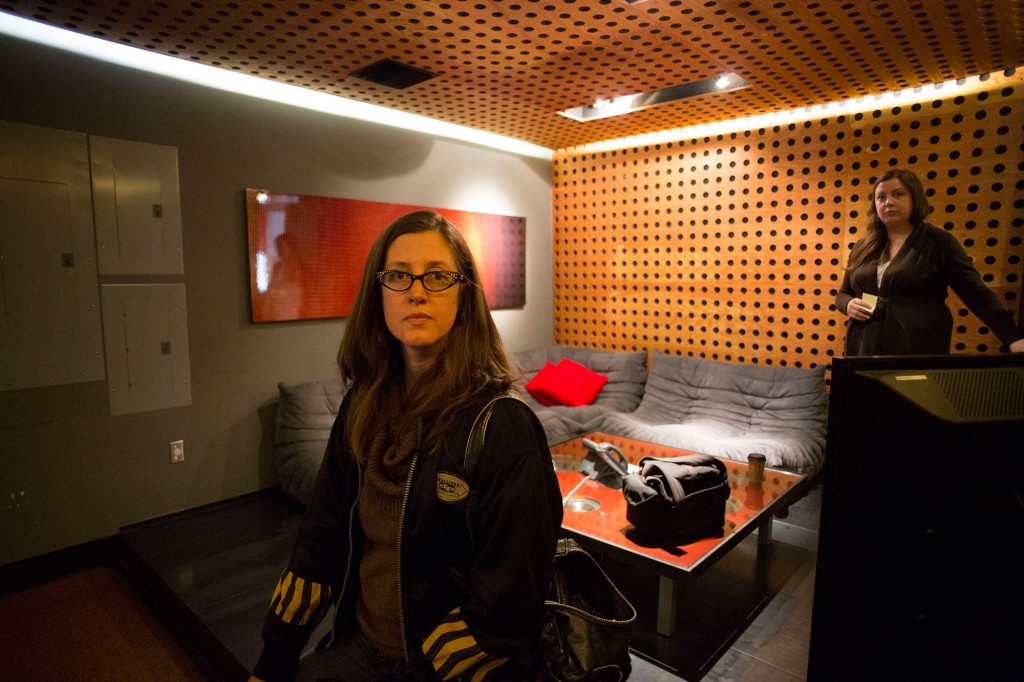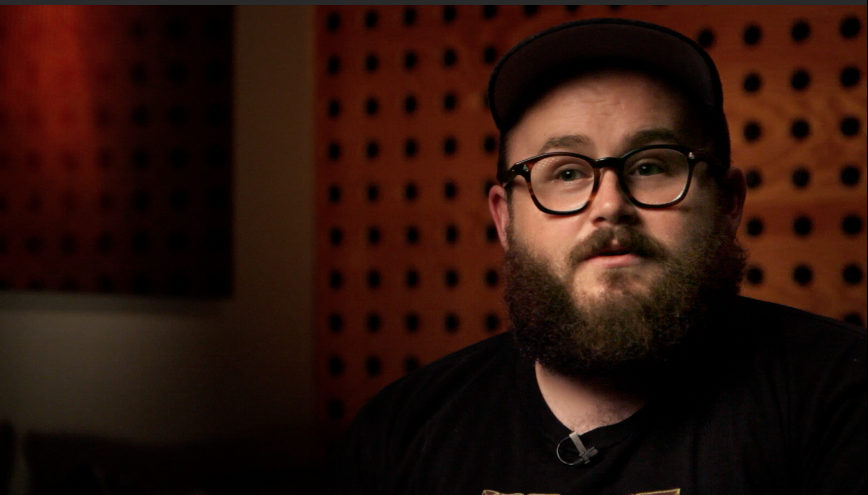Today was our first shoot with Alex James, who is interning with us at Visual Contact. Alex passed the “how the hell can you fit all this filmmaking equipment into the back of this Nissan Leaf” test today, and we’re thrilled to have him on the team this summer. Alex is a senior at Ballard High School, where he recently got his hands on the Oscar won by Undefeated director TJ Martin, who spoke to his class. “It was very, very heavy,” he said. Welcome Alex!
Monthly Archives: June 2012
Overcast lighting tip: take it off the top with negative fill
A quick way to make the most out of overcast lighting is to place your subject against a darker background, add some bounce for the eyes and a bit of negative fill on one side. But why stop there? Let’s say you’re shooting an interview outdoors on a profoundly overcast day. And you don’t have any lighting to punch things up. Here’s something simple you can do to add some seriously directional quality to the light.
Let’s start with a baseline shot: overcast day, soft Seattle light raining down from above, guy with shockingly white hair (me!), shot against some foliage.
Fly a piece of 4×4 foam core up on a c-stand directly over subject’s head. Drop the flag down until you’re subtracting some light off the top of his head, and you’re seeing the light coming in primarily from the sides. You’ll have to open up a couple stops to maintain the correct exposure. Like so:
That guy’s hair isn’t so white. Really.
Now, add another a flag on the non-key side. You might need two of them (I did).
Check out the way things look now:
If this had been a real shoot, I’d have fiddled with it a bit more, bringing the flag closer to the camera-left side to block more light, and opening the camera-right side of his face to a bit more light. Also, I’d have opened the camera aperture from f/5.6 f/2.8, to throw the background more out of focus. Oh what the heck, as long as I’m talking about it, I might as well actually do it. Like so:
Regardless of how far you take it, the result is clear. Using this simple technique, light is pulled off the top, and wrapped around the side. On an overcast day, enough light will find its way past your flags to provide plenty of fill, but you’ll get this nice soft directional quality.
DocForest is September 14-16
Seattle documentary filmmakers will gather again this year for SeaDocs annual meetup in the Kitsap Peninsula. It’ll happen Friday, Sept. 14 through Sunday the 16th. There will be lots of opportunities to screen your work in progress and get feedback from a supportive audience. And the location is magical: the Kitsap Mountaineers’ Forest Theater. Camping will be available, as well as summer-camp style cabins.
Lisa Cooper and I have been invited to teach a 90-minute workshop about DSLR filmmaking, which we’re looking forward to. We’ll cover all the basics: the DSLR’s strengths and weaknesses, how to resolve the challenges of dual-sound recording, how to get a big-film look on a lunch-money budget, and much more.
I’m told more details will be posted on the SeaDocs Facebook page as they become available.
Filter: We've Got Your Back
Our most recently completed and published project is a 1-minute promotional video for the fab folks at Filter, a Seattle-based creative firm. Filter provides staffing as well as creative for clients that include Nike, Disney, Xerox, Google, and many others. This piece was screened at a conference in LA to inform attendees about Filter’s services. This video is an example of the type of work we do best at Visual Contact: taking a documentary approach to crafting a corporate message.
6 cheap travel tricks for DSLR filmmakers
Recently one of this blog’s readers asked me: “Can you do a post about something that everyone does–but nobody talks about? Which is: packing and traveling with all of your stuff?” So here I am, ready to share some tips about how to get your gear on location without breaking the bank.
(Click twice on images for larger version.)
But first, a couple of assumptions. Before I started making purchases about how to cart my gear around, I took a look at how I was currently using the equipment, and where I was using it. And I recognized that 95 percent of my travel is local travel – within 50 miles of home. It’s tempting to buy with the assumption that you will be hopping on a plane any moment. But that would be to make the mistake that many car buyers make when they pass over electric cars “because they don’t have enough range.” The fact is, the average American drives about 35 miles per day. But they want what economists call “option value:” the feeling that they can drive anywhere, any time. Gas cars give you that, even though most rarely exercise that option in practice. I bought a Nissan Leaf a year ago, so you know where I fall on this spectrum.
So when I was planning my gear purchases, I decided to focus on stuff that was more affordable than sexy, stuff that would gave me quick and easy access to my stuff both when I’m hunting for it in my office, that would help keep things organized while on location, and would keep my equipment safe without being overly (costly) protective.
So here’s what I discovered.
1. Plastic tubs (the kind with lids that stay closed) are your friend. The transparent ones are also great for helping you see at a glance what you’re looking for, just by looking. Use small tubs for organizing smaller items: lights, mics, etc. I find that my lights travel very well and safely this way, by car, where I can load everything myself with relative care. I put foam in the bottom of some of the tubs, which adds enough shock absorbing quality that I’ve yet to break any thing carried this way.
But what I find most useful about stashing my stuff in plastic tubs, is that I can use them to group accessories with the item being transported. For example, my ProLight is almost always used with a snoot and a dimmer. But almost as often, I’ll want it with barn doors and a dichroic filter. And almost certainly I’ll need blackwrap to kill any stray spill. So I store all of these items in the plastic tub with the ProLight. That way, everything is in the same place when I need it. Sweet.
2. Milk Crates. They are great for carrying grip equipment: clamps and weights not only fit into them, but can hang off the rim for quick access during a shoot. Bonus: you can dump everything out and use it as a light scrim to liven up a boring interview background by projecting light through it.
3. Get a cart. At least start with an inexpensive dolly like one of these. But trust me, go with the cart. The small dolly and truck wheel don’t cut it on rough terrain like Seattle sidewalks. Go for a cart with fat, curb-crawling tires. Mine is a Multi-Cart R12 that I found at Glazers Camera. Worth every penny, and small enough to fold up and fit into my Leaf. I can’t imagine showing up on location without it.
4. Gels are a pain in the ass: always somewhere else when you need them, rolled up with elastic bands. The solution: use a Gelly Roll for packing your gels. You cut your gels, tuck them into the Gelly Roll, and roll them up. They pack small and the tube carries clothes pins (film industry calls them c-47s, but I always feel ridiculous calling them that – sounds like an airplane or a form of plastic explosive to my ear)
5. Have at least one really good Pelican case for your truly breakable and expensive stuff (lenses, for example). You can find them used on Craigslist any day of the week, and even though they are relatively expensive used, they are indestructible. I have a small one for my prime lenses, which helps them stay organized on location, as well as safe. I’ve got a medium sized one that I carry my follow focus, long glass, and small LED light around in. It helps me stay organized while I’m on location. For quick white balance, I keep a gray card taped in a plastic sleeve inside the lid, under the padding (see photo).
TIP: when working out of a Pelican case on location, make sure you latch at least one of the cover lockdowns. Otherwise, someone will sooner or later come along, think that it’s latched, and pick it up, sending the contents of the case cra$hing.
My favorite Pelican trick is to carry a gray card behind the foam liner of the cover. That way, I can always have a gray card within reach when on location. I used to carry a few gels there too, before I started using the superior Gelly Roll for that.
6. Get a used hard-plastic golf club case. It’s great for hauling a tripod and light stands around. I found a used SKB case on Ebay like this one for around $60. Bonus: most airlines won’t charge you oversize fees when you have a golf case. Apparently golfers are customers they want to keep happy. So there, you see the thought of air travel did at least cross my mind! But this case is really awesome for schlepping in the back of the car, too. I can fit two c-stands, a glide track, several light stands AND my tripod in there. In practice I usually leave my tripod in its travel bag because it makes the SKB case too heavy to carry. But it’s an option if needed.
So there you have it: my tips for local travel. How about you? Got any tips to share?
3 location scouting tips for shooting better interviews
For making films, my background in photojournalism turns out to be both a blessing and a curse. On the plus side, I know plenty about cameras, optics, and how to compose a shot. But photojournalism is a reactive game. A photojournalist’s instincts are to show what she sees rather than what she imagines. This is a huge skill: the ability to react almost instantly, to maneuver the camera into the best place to capture the defining moment as it happens.
But making films, I’ve discovered that approach rarely works. There are just too many variables coming up at once that you have to be on top of: sound, light, motion, schedule pressures, crew questions, etc. To find my footing in this related but very different terrain, I’ve had to learn to be proactive. Even for a basic filmmaking task like shooting an interview.
What I’ve discovered is that the simplest and best way to get better interviews is to scout every shooting location. Yeah, I know, probably not news to anyone who’s attended film school. Or like my partner Lisa Cooper, who knew this instinctively. But for me it’s a hard-won lesson. So…
Here’s what works for me:
1. Visit location at least a day in advance of a shoot.
2. Take stills at the location.
3. Review stills, and make a lighting plan.
What happens for me when I walk through a location without the immediate pressure of shooting is awesome. Curiosity becomes my guide. Without the pressure to start shooting in 20 minutes, I see things I wouldn’t otherwise see: a frosted glass window suggests possibilities as a background, for example. But what about that open doorway? Sound might be a problem here…so how about the conference room?
Here’s some shots I took on a recent walkthrough of an office space where we would be shooting two interviews:
As I visit the space, I take pictures. Lots of pictures. I explore every possible interview room from multiple angles. Even if I don’t think a room is going to work, I take pictures. And what often happens is that when I’m reviewing the shots later, the idea comes to me. Hits me right between the eyes, actually.
An iPhone is ok if you don’t have anything else, but I’ve found that shooting stills with my DSLR is much better. Sometimes background details will provide clues to how best to frame the interview. With the DSLR, I’m able to blow them up and see the detail.
In the case above, my walkthrough began with shots of the employees open office space, and ended up in a conference room that had some frosted glass panes. It was possible to close the blinds on all outside windows. Initially I thought I wanted to do something with window light, possibly with the subject framed in the open doorway so we could see some out-of-focus workers in the background.
Later, when I was reviewing the photos, it occurred to me that the better way to do it was to use the frosted glass as a background, because the topic of the piece was about transparency in business practices. Even though the glass is opaque, the idea of transparency (or lack thereof) is at least hinted at. Here’s what the final interview, which was shot in the conference room, looked like:
Having this plan allowed me to mentally prepare to shoot the second interview, so that it would also match visually. For scheduling reasons, this second interview had to be shot in a totally different location at the same business, a small interior room without any windows. Lucily, however, it had one frosted glass wall, which faced a hallway. To recreate the daylight filtering through glass, I simply placed a daylight-balanced LED light outside and aimed it into the glass. It ended up matching pretty well:
I don’t know if I would have been able to come up with this approach on the spot. But because I had time to plan, I had figured out how to do this in advance, which made for a much more relaxed shoot day.
Another office location that we visited recently presented similar challenges. We walked through a busy office space and found a quiet editing bay, which caught my eye because of the interesting circular patterns. I had Lisa sit in approximately the place where I imagined setting up a soft box to light the subject.
We ultimately shot two interviews in the space, changing them slightly to get each subject on opposite sides of the frame:
In my next post, I share how I use my two favorite iPad tools to make and share my lighting plans: Omnigraffle, and Lighting Designer.
Update: Here’s the post about using Omnigraffle as a tool for planning your lighting.
Matthews triple header adds options to c-stand lighting
I love c-stands.They send lights safely soaring into the air with a reassuring heft. But until recently, I’ve basically been using them like big light stands: put light on c-stand; put light modifier (flag, silk, etc) on second c-stand; adjust; repeat. But all of this changed when a helpful Glazers rep suggested I take a look at a Matthews Baby Triple Header.
Here’s how it works. You mount the triple header on the top of the c-stand, and it gives you wings in the form of five 5/8″ jr. spuds: three on top, two underneath. And from these you hang lights and accessories.
At first glance, it might not seem that earthshaking. But it’s so much more than the ability to fly more than one light at a time. What I find most powerful is that I can attach and offset a gobo arm. This simple trick allows me to light and soften with a silk, using the same stand. In practice this means I can use one light with a medium silk, or two lights with a medium silk for extra punch.
With so many spuds, it’s a simple thing to attach more than one arm, too. So using my Road Rags, I can hang two small silks, one in front of each light, to imitate the light cast by two small windows next to each other in a wall.
I’ve got a feeling I’ve only just begun to explore the configurations possible with this accessory. What combinations have you thought of?
